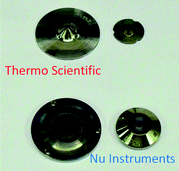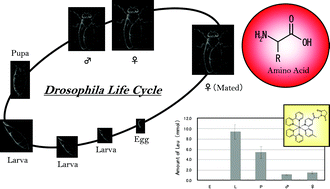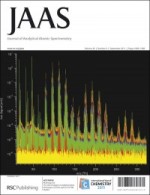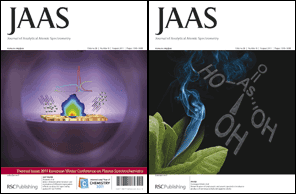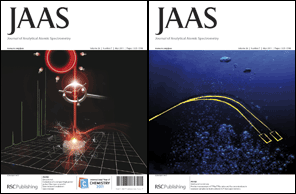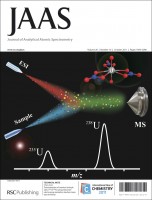
JAAS, 2011, 26(10):1909-2096
In the latest issue of JAAS, the cover highlights work on determining uranium isotopic ratios.
Huanwen Chen of the East China Institute of Technology, Nanchang, and colleagues used extractive electrospray ionization mass spectrometry (EESI-MS) for the quantitative detection of uranium isotopic ratios in samples from natural water, uranium ore and soil. Their results indicate that this method enables fast detection of uranium isotopes with potential applications in nuclear research laboratories and the nuclear energy industry.
Technical Note: Determination of uranium isotopic ratio (235U/238U) using extractive electrospray ionization tandem mass spectrometry
Chunxiao Liu, Bin Hu, Jianbo Shi, Jianqiang Li, Xinglei Zhang and Huanwen Chen
J. Anal. At. Spectrom., 2011, 26, 2045-2051
DOI: 10.1039/C1JA10054H
This article is free to access for the next six weeks.
Why not browse some of our latest high-quality technical notes? Amongst those featured in this issue are:
Technical Note: Plasma quenching during hydrocarbon sample introduction via gas chromatography into a pulsed ms dc-glow discharge
Daniel Fliegel and Detlef Günther
J. Anal. At. Spectrom., 2011, 26, 2052-2057
DOI: 10.1039/C0JA00274G
Technical Note: Batch is bad? Leaching of Opalinus clay samples and ICP-MS determination of extracted elements
Ralf Kautenburger
J. Anal. At. Spectrom., 2011, 26, 2089-2092
DOI: 10.1039/C1JA10142K
And don’t forget to take a look at the latest Atomic Spectrometry Update, also in this issue:
Atomic spectrometry update: X-ray fluorescence spectrometry
Margaret West, Andrew T. Ellis, Philip J. Potts, Christina Streli, Christine Vanhoof, Dariusz Wegrzynek and Peter Wobrauschek
J. Anal. At. Spectrom., 2011, 26, 1919-1963
DOI: 10.1039/C1JA90038B



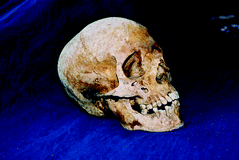









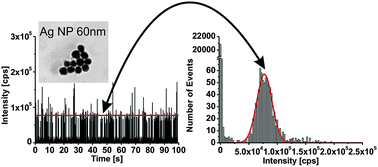
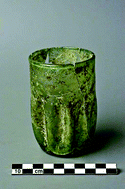 Roman glass across the Empire: an elemental and isotopic characterization
Roman glass across the Empire: an elemental and isotopic characterization
